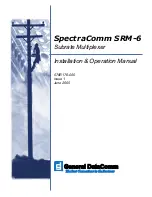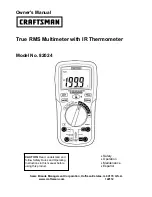
19
37
1
20
1
20
19
37
5
10. TECHNICAL SPECIFICATION (PX106 version)
decoding 128 subsequent DMX channels, starting with
the defined starting address
128 0 / +10 V outputs, 20 mA / output max.
XLR-3 plug and socket
4 D-SUB 37 sockets
230 V / 50 Hz, fuse on the rear panel
3 kg
483 mm (19”)
44 mm (1U)
230 mm
- DMX input
- analog input
- DMX control sockets
- analog outputs
- power supply
- weight
- dimensions:
- width
- heigth
- depth
9. ANALOG SIGNALS CONNECTION
8. DMX SIGNAL CONNECTION
ATTENTION:
Pins 1 - 32:
analog outputs
Pins 33 - 37:
ground
When creating the signal cables it is
recommended to use all the ground pins and
creating the grounds connection with the cables
of a large cross-section area.
D-SUB 37 socket
(frontal view)
D-SUB 37 plug
(frontal view)
Installed in the demultiplexer
128 0 / +10 V analog outputs are driven out to 4 D-SUB37 sockets, placed on the rear panel.
There are 32 subsequent outputs and 5 ground pins on each socket. The outputs are brought out
to 1 - 32 pins, the ground to the pins nos. 33 - 37. Below is the illustration of pins disposition in the
D-SUB37 socket (installed in the demultiplexer) and the D-SUB37 plug as well.
LAST
DEVICE
RESISTOR
1
2
3
110 Ohm
PUSH
1
2
3
SHIELD
DMX -
DMX +
1. ground
2. DMX (-)
3. DMX (+)
P
U
S
H
1. To connect the devices application of the
microphone cable is strictly recommended
(two strands in a shield).
2. The devices have to be connected in series.
3. To split the DMX line it is necessary to use
the DMX SPLITTER (PX094).
4. In case of the great number of devices or
long distances use the DMX REPEATER
(PX097). It is an amplifier of the DMX signal.
5. In the last device a terminator must be
installed. It is a 110 Ohm resistor.


























